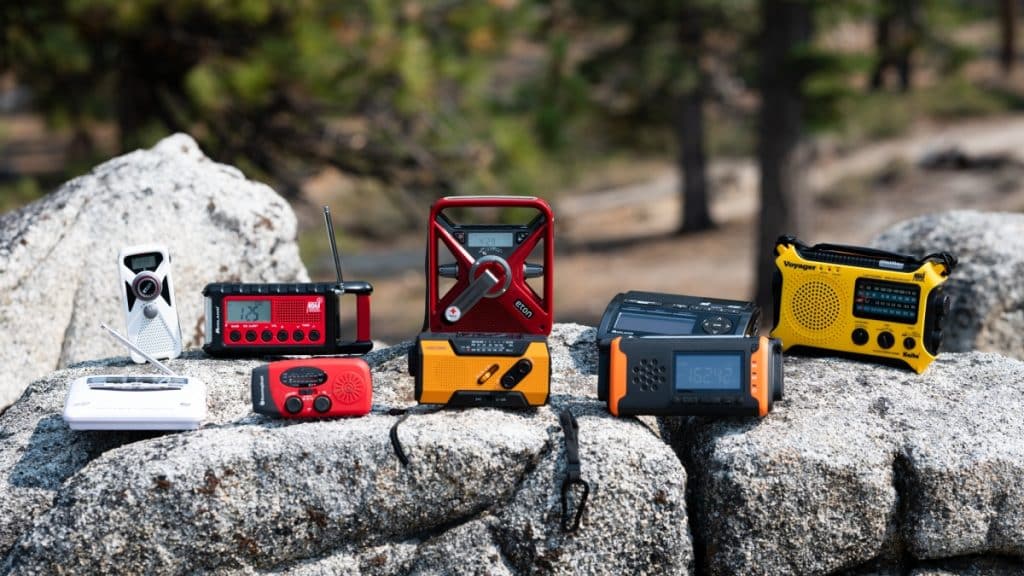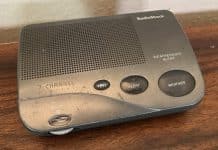Have you ever wondered just how loud a weather radio can be? In this article, we will explore the decibel levels of weather radios and why it is essential to understand their volume correctly.
Whether you are an avid weather enthusiast or want to stay informed about potential weather emergencies, knowing how loud a weather radio can be will help ensure you never miss a critical alert.
So grab your headphones and get ready to discover the surprising volume of these essential devices.

Review contents
Introduction
Weather radios provide essential and potentially life-saving information about weather conditions.
They are specifically designed to receive signals from the National Oceanic and Atmospheric Administration (NOAA) Weather Radio All Hazards (NWR) network. Individuals, businesses, and organizations widely use these radios to stay informed about weather alerts, warnings, and forecasts.
In emergencies, having access to up-to-date and accurate weather information is crucial. Weather radios are an essential tool that can help you prepare and make informed decisions.
They offer a reliable means of receiving alerts and warnings, even if other communication systems are down. But how loud are weather radios? Let’s explore the factors that affect their loudness and how they compare to other devices.
Factors Affecting the Loudness of a Weather Radio
Several factors can influence the loudness of a weather radio. Here are some key factors that impact the overall volume:
Speaker Quality
The quality of the speaker plays a significant role in the loudness and clarity of the sound produced by a weather radio. A high-quality speaker can reproduce sound more accurately and efficiently, producing a louder output.
Amplification
Amplification refers to the process of increasing the strength of an electrical signal. Weather radios may have built-in amplifiers that enhance the sound signal, making it louder and more audible.
Audio Output Power
The audio output power of a weather radio determines the volume levels it can achieve. Higher output power generally translates to louder sound. However, balancing loudness and audio quality is essential to ensure clear and intelligible alerts.
Audio Frequency Response
The audio frequency response refers to the range of frequencies a weather radio can reproduce accurately. A wider frequency response ensures that both high and low-frequency sounds are audible, contributing to overall loudness and clarity.
Decibel Measurement
To understand the loudness of a weather radio, it’s essential to grasp the concept of decibels (dB). Decibels are a unit of measurement used to quantify the intensity or magnitude of sound.
Explanation of Decibels
Decibels are a logarithmic scale, which means that a slight change in decibel value represents a significant change in perceived loudness. For example, an increase of 10 dB is roughly perceived as a doubling in loudness.
Comparison of Decibel Levels
To put the loudness of a weather radio into perspective, let’s compare some expected decibel levels:
- Standard conversation: Around 60 dB
- Typical household appliances: 50-70 dB
- Noisy restaurant: 80-90 dB
- Rock concert: 100-110 dB
- Jet engine at takeoff: 120-140 dB
Threshold of Hearing
The threshold of hearing refers to the lowest sound level that an average human ear can detect. It is generally around 0 decibels, although individual variations exist.
Threshold of Pain
The threshold of pain represents the sound level at which sound becomes physically uncomfortable or even painful for most people. It typically ranges from 120 to 140 decibels.
Normal Range of Weather Radio Volume
Weather radios are designed to provide audible alerts and warnings in various environments. As a result, they are equipped with adjustable volume settings to suit different preferences and needs.
Minimum Volume Level
The minimum volume level of a weather radio ensures that alerts are still perceptible, even in quiet surroundings. This level is carefully calibrated to be audible without being overly disruptive.
Maximum Volume Level
The maximum volume level of a weather radio is set to be loud enough to overcome ambient noise and reach the intended listener. It allows for precise, distinct alerts, even in loud or busy environments.
Audibility
The audibility of a weather radio depends on various factors, including the listener’s distance from the radio and background noise.
Optimal Listening Distance
To get the best listening experience from a weather radio, it is recommended to be within a certain distance. This distance can vary depending on the specific model and its speaker capabilities. However, as a general guideline, being within a few feet of the radio ensures optimal audibility.
Effect of Background Noise
Background noise can significantly impact the audibility of a weather radio. In noisy environments, it may be necessary to increase the volume level to overcome competing sounds. Weather radios are designed to deliver alerts that cut through background noise, but it’s essential to use caution and consider the comfort of those around you.
Comparison with Other Devices
When it comes to the loudness of weather radios, how do they stack up against other devices commonly used for communication and entertainment? Let’s take a look.
Smartphones
Smartphones are ubiquitous devices that offer a range of features, including the ability to receive weather alerts. While smartphones can produce sound at a reasonable volume, they may not match the specialized speakers in weather radios. Additionally, call notifications or other app sounds can affect the sound quality and audibility of smartphone alerts.
Radios
Traditional radios, especially those designed for emergencies, can provide loud and clear alerts like weather radios. However, weather radios have the advantage of being specifically programmed to receive NOAA broadcasts, ensuring that you receive accurate and timely information during severe weather events.
Televisions
Televisions are often utilized to receive weather updates, particularly in households. Like weather radios, TVs can produce loud and clear alerts. However, the volume level may depend on the settings or regular programming being watched during the alert.
Adjustable Volume Levels
Weather radios typically offer adjustable volume settings for individual preferences and environmental conditions.
Volume Control Options
The volume control options on weather radios differ depending on the specific model. Some radios may provide manual volume knobs, while others have buttons or touch controls. Regardless of the control method, adjusting the volume allows you to find a comfortable and audible level for alerts and warnings.
Benefits and Drawbacks
The ability to adjust the volume of a weather radio offers flexibility and customization. It allows you to increase the volume in noisy environments or decrease it when maintaining a quiet atmosphere.
However, it’s important to remember that loud volumes can harm your hearing, mainly if used for prolonged periods.
Silent or Vibration Mode
In certain situations, having a weather radio that can operate silently or provide vibration alerts can be advantageous.
Emergency Silent Mode
Maintaining silence may be crucial during emergencies to ensure safety and prevent panic. Weather radios with a silent mode allow you to receive alerts without audible sounds, relying instead on visual indicators or vibration.
Vibration Alerts
Vibration alerts can be handy for individuals with hearing impairments or in scenarios where audible alerts would be ineffective or intrusive.
By vibrating instead of playing sound, weather radios can discreetly ensure you receive critical information.
Using Weather Radios in Noisy Environments
Weather radios are designed to be effective in various environments, including noisy ones. However, there are steps you can take to optimize their performance.
When using a weather radio in a noisy environment, try to position yourself as close to the radio as possible. This will help minimize the impact of background noise and increase the audibility of alerts.
Additionally, adjusting the volume level to a setting that cuts through the noise without being uncomfortably loud can enhance your ability to hear and understand the warnings.
Disturbance to Others
While receiving critical weather information is essential, it’s vital to be mindful of the impact your weather radio may have on others around you. Being considerate of those nearby ensures everyone can go about their activities undisturbed.
Volume Considerations
When using a weather radio in public places or shared spaces, use judgment and keep the volume at a level that is audible to you without unnecessarily disturbing others. Remember that loud volume can be irritating or disruptive to those nearby.
Etiquette for Using Weather Radios in Public
In public settings, such as cafes, waiting rooms, or libraries, it’s courteous to use headphones with your weather radio to listen to alerts privately. This allows you to receive the necessary information without causing distractions or interrupting others’ conversations or activities.
In conclusion, weather radios are designed to provide reliable and audible alerts, ensuring that you have the information you need during severe weather events or emergencies. Speaker quality, amplification, audio output power, and audio frequency response contribute to their overall loudness.
By understanding how weather radios measure up in terms of decibels, adjustable volume levels, and their impact on others, you can make the most effective use of these essential devices.







































